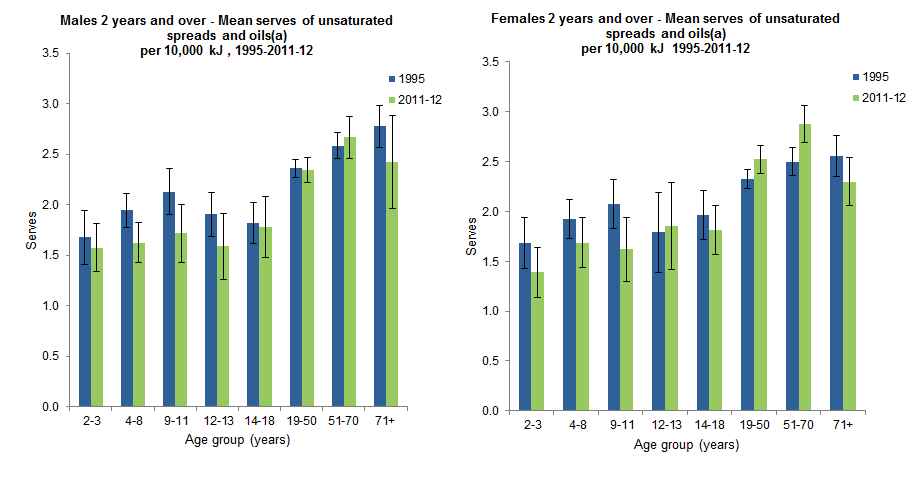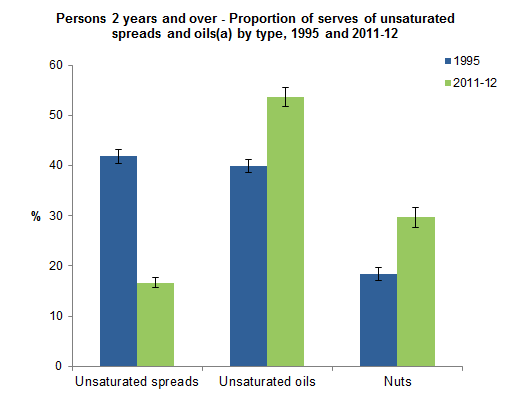UNSATURATED SPREADS AND OILS
The Australian Dietary Guidelines make allowances for non-discretionary sources of unsaturated spreads and oils (such as margarine or cooking oil) in recognition of their role in providing essential fatty acids, facilitating the cooking process and enhancing palatability. Between 1995 and 2011-12, the average consumption of unsaturated fats remained similar at 2.3 serves per 10,000 kJ overall, although there was a 12% decrease among children aged 2-18 years and increases of 8% and 15% among females aged 19-50 and 51-70 years.

(a) From non-discretionary sources, Based on Day 1. See Glossary for definition.
Sources: National Nutrition and Physical Activity Survey, 2011-12 and National Nutrition Survey, 1995
While the amount of unsaturated spreads and oils consumed was similar in each period, there has been a decline in the amount sourced from unsaturated spreads (i.e. margarine) from 42% in 1995 to 17% in 2011-12. The decline in serves from spreads, was balanced by increases in the contribution from unsaturated oils (from 40% to 54%) and nuts (18% to 30%).

(a) From non-discretionary sources, Based on Day 1. See Glossary for definition.
Sources: National Nutrition and Physical Activity Survey, 2011-12 and National Nutrition Survey, 1995
Discretionary sources of unsaturated spreads and oils
Including the unsaturated spreads and oils from discretionary sources would add an extra 1.5 serves per 10,000 kJ on average in 1995 and an extra 1.3 serves in 2011-12. Cereal based products (such as high saturated fat pizzas and burgers) were the most common source of discretionary unsaturated fats and oils, contributing 27% in 1995 and 29% in 2011-12. Vegetable products and dishes (such as potato chips) was also a leading contributor, but the contribution fell from 26% in 1995 to 17% in 2011-12. Other notable sources of discretionary unsaturated fats and oils were snack foods (15% in 1995 and 19% in 2011-12) and fish and seafood products 8% in 1995 and 10% in 2011-12.
 Print Page
Print Page
 Print All
Print All